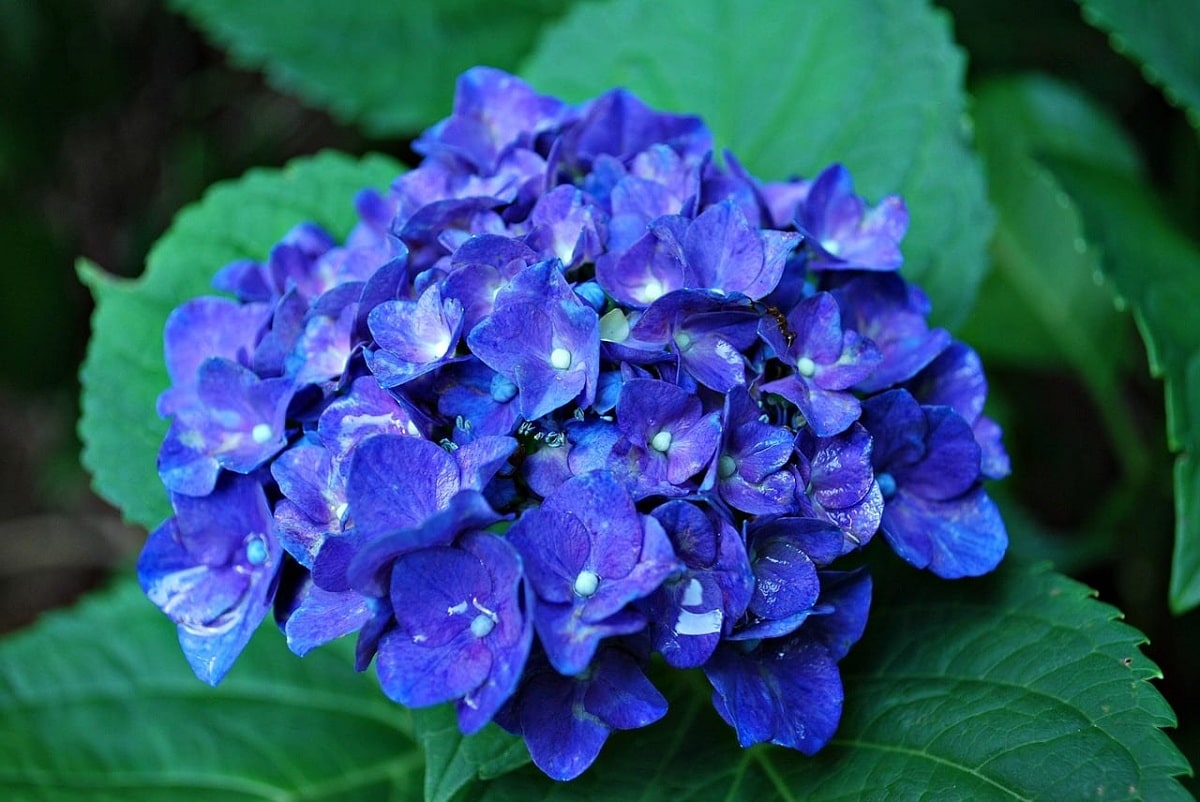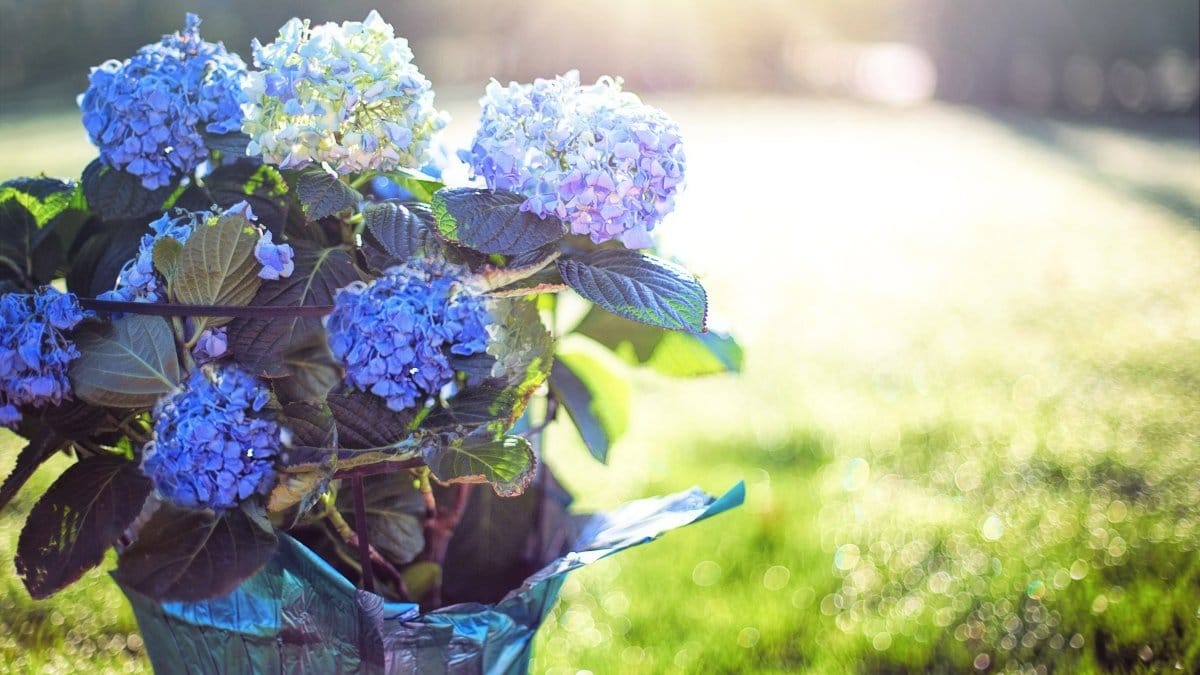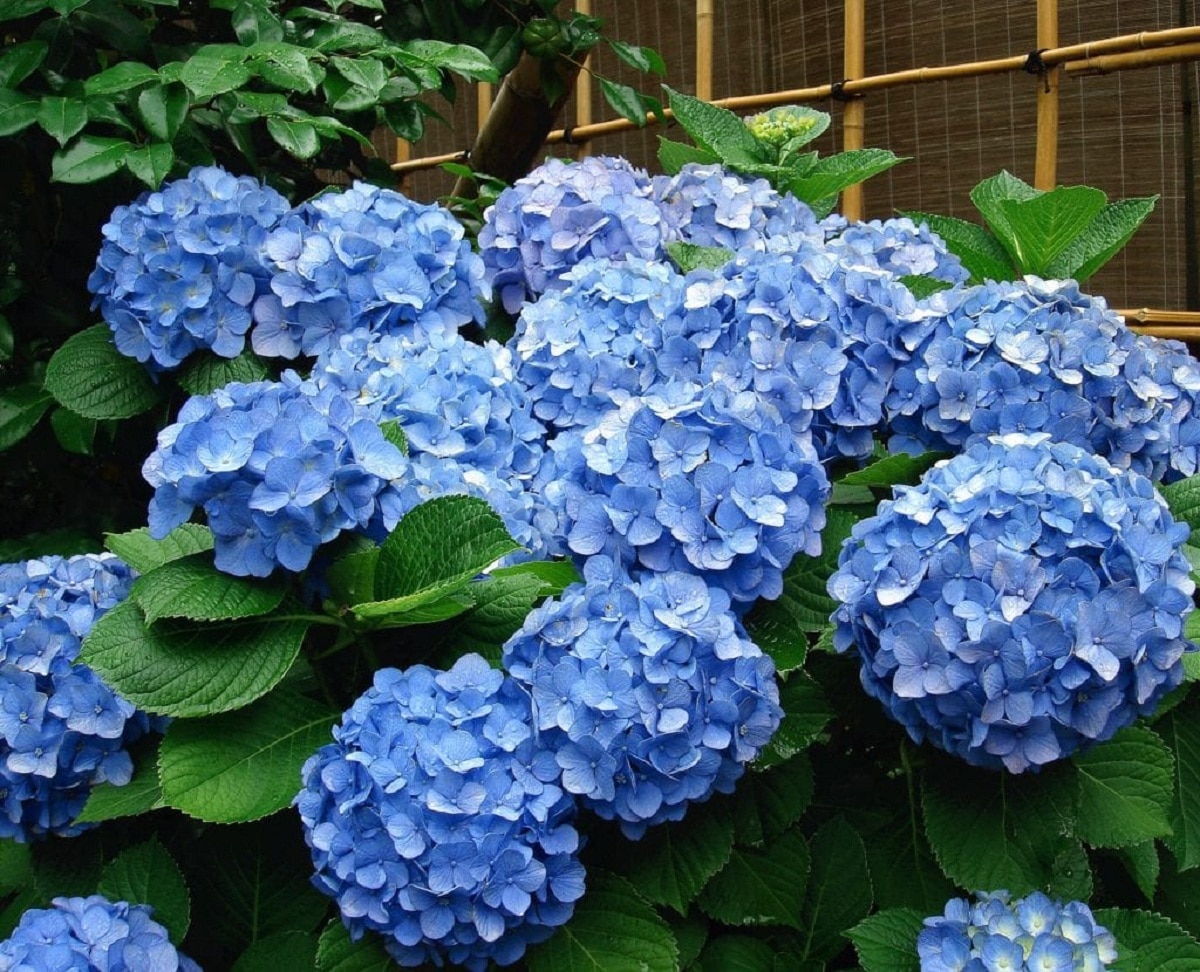
Hydrangeas are very easy to grow shrubs that can even be grown in warm temperate climates, such as the Mediterranean. They are very rustic, and also have the peculiarity that they keep their flowers for many months of the year: from spring to early fall. And not only that, but also you can change the color. How? Doing the odd experiment with water. Discover how to get blue hydrangeas.
Here we tell you everything you need to know to get blue hydrangeas.
Key features

Before knowing how to get blue hydrangeas, we must know what their characteristics and care are in order to emphasize these types of changes. We know that this type of flower can change its color depending on some variables in its care. Therefore, we are going to focus now on its characteristics and care.
All the hydrangeas They are deciduous shrubs found in humid regions with naturally mild winters. Popular species within hydrangeas are characterized by have large rounded blooms that bloom in summer. It is, perhaps, the best-known potted plant in Spain and is sold as a garden shrub. In other parts of the world that have the correct humidity and temperature, it can grow without any problem. Some of the places in the world where they are found is the lowest part of South America such as Buenos Aires.
In the most humid or Atlantic part of Spain, it is found as the common plant with a wide area of distribution, especially in places that are influenced by the coastal strip. The best hydrangeas are those with the largest and most colorful flowers. There are people who want to change the color of hydrangeas and must know some main aspects of their care in order to have blue hydrangeas.
Hydrangea care
This type of plants It can only live in full sun in coastal or temperate areas. In the rest of the areas they should have some protection from a shade or at least in the most central hours of the day. The sun's rays from the central area of the day can end up destroying its leaves and flowers. They are plants that demand a large amount of humidity in the land but must have good drainage to avoid flooding. And it is that the roots of this plant can rot if the soil where it is found is continuously puddled.
The most suitable soils to have hydrangeas are those rich in organic matter and humus. These substrates help to maintain the sufficient humidity that this plant needs. Both in the previous phase of the hydrangea planting and in the following years, a good supply of leaf mulch, decomposed manure and related substances must be present. The organic matter that the soil has will largely determine the degree of acidity of the same. Depending on the pH of the soil, the color of the hydrangeas will vary.. If we want blue hydrangeas, later we will explain what you should take into account.
We only anticipate that, the lower the soil pH, the more intense the hydrangeas' blue hue. The same goes for those purple flowers. On the contrary, if the pH is very high, the color of the flowers will be more reddish and pinkish. These flowers develop from the buds that are formed from the previous year. This means that pruning should be anticipated as much as possible, being carried out just when the flowering period ends so as not to hinder or interrupt the next flowering.
You have to reduce its branches up to about 30-40 centimeters from the ground to preserve all the basic structure on which the bush develops each year. This plant can reproduce by seeds although it costs too much to find them and they are somewhat expensive. It can also be layered, although the most common is by cuttings. It is advisable to use rooting hormones, but a mixture of humus and peat may be enough if we do not have hormones.
If it begins to sprout in early spring, it will probably be in bloom by late summer. Must take into account the presence of some pests since it has a high need for humidity. You just have to visually control it to be careful.
pH and blue hydrangeas

Blue-flowered hydrangeas can be bought in this way, or they can be watered with water with a pH between 4 and 5,5. But of course, not only do we have to have a water with that pH, but also the substrate that we use must also have a low pH. So, What do we need to achieve our goal? Basically four things:
- Substrate for acidophilic plants.
- Lime or lemon to raise or lower the pH.
- PH meter (which you can buy from here).
- Specific fertilizer for acidophilic plants (for sale here).
Getting blue hydrangeas
When we buy a hydrangea the first thing we have to do is transplant it into a pot about 2-3 centimeters larger using a substrate for acidophilic plants, since in this way the plant will have adequate growth from the beginning. But, as we mentioned, also it is important that it is watered with acidic water. Let's see how the pH is modified:
- To know if we have to lower or raise the pH, we must use some strips that are sold in pharmacies that, when in contact with water, change color. That color will tell us if it has a low or high pH.
- Once we know what the water has, what we will do is modify it if it is not what we want, that is, the pH from 4 to 5,5.
If we need to raise it, what should be done is to dilute the lime little by little.
And if on the contrary we need to lower it, we will dilute the liquid of a lemon, also little by little.
It is important that we use the pH meter from time to time. This way we will achieve the pH we want.
Once we have it We will water our hydrangeas with this water regularly, and we will fertilize it in spring and summer with a specific fertilizer for acidophilic plants. In this way, in less than we think we will have beautiful blue hydrangeas.